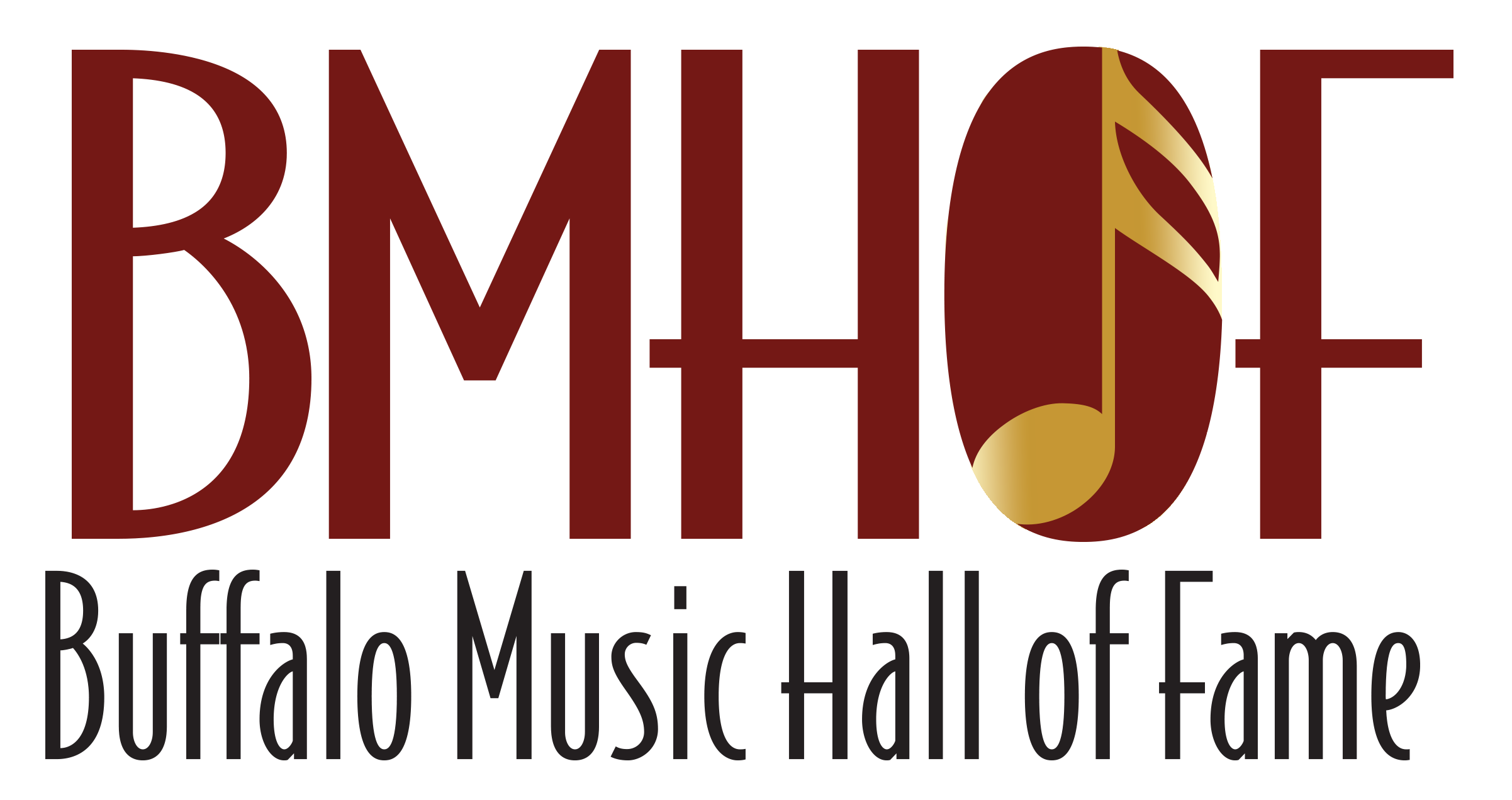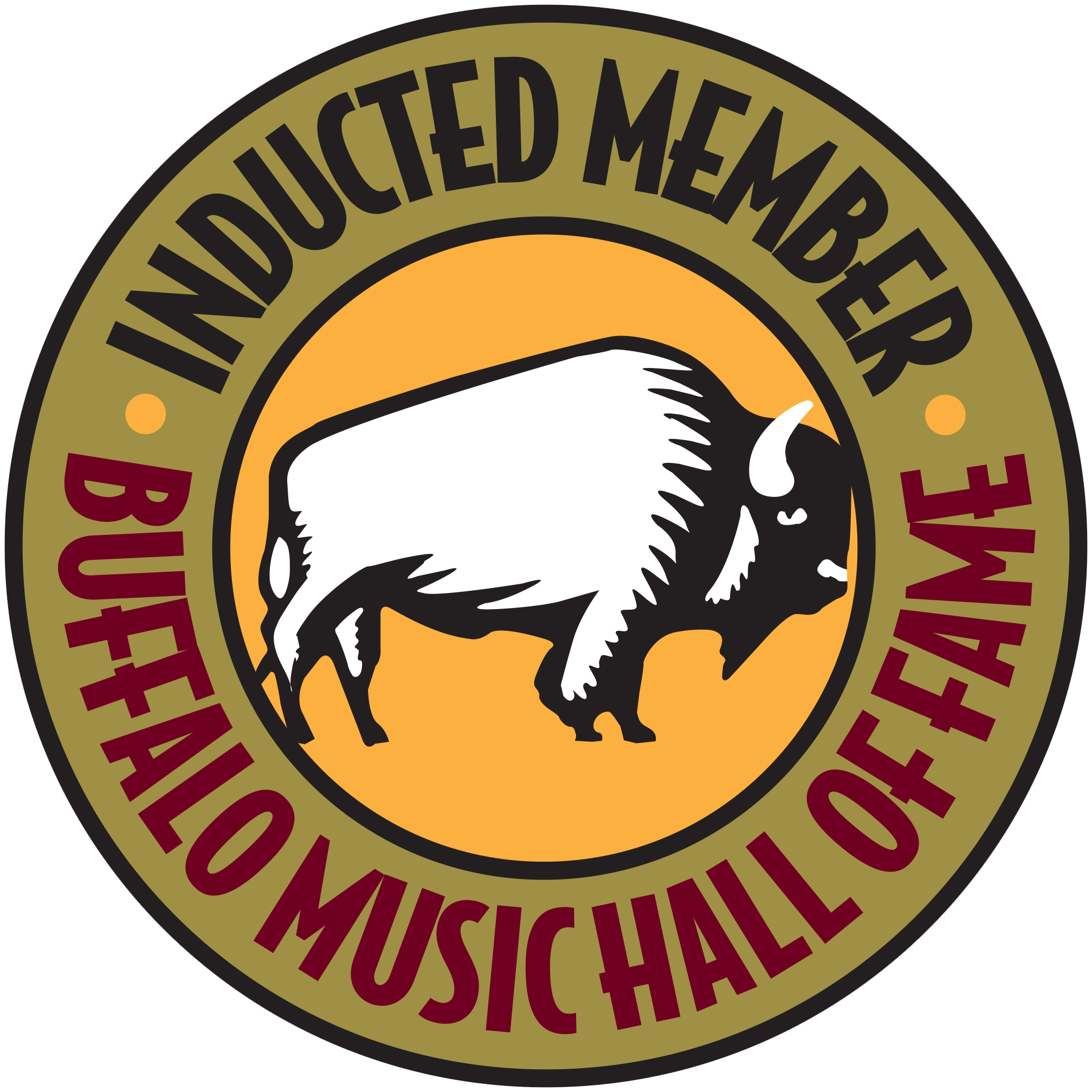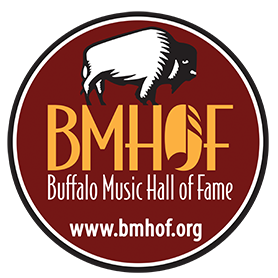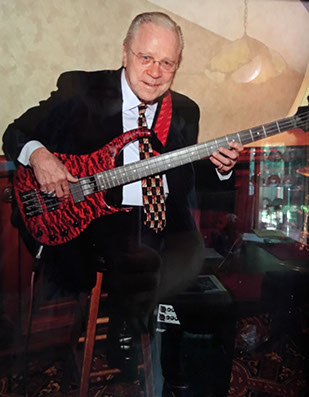





RAY CHAMBERLAIN - BMHOF CLASS OF 2016

Ray Chamberlain was a witness to and a participant in a golden era of American music.
It was during the 1950s and the places were Los Angeles and Las Vegas. Chamberlain had built a reputation as a national level guitar player and was playing in the band of Frances Faye, a cabaret star and off the charts character. Jack Costanza, known as “Mr. Bongo” for his role in popularizing the instrument and bringing Latin jazz to the U.S., was in Faye’s group when it played in North Hollywood.
“Costanza was teaching Marlon Brando to play, and he used to come in two or three nights a week and sit there about three feet away,” said Chamberlain.
Looking up during a dance set between Faye’s sets, Chamberlain saw actress Rita Hayworth dancing with columnist Walter Winchell .
It was a great time for West Coast jazz and gave Chamberlain a chance to put together the chops he had developed since growing up in Lackawanna.
He was a trombone player when he went into the U.S. Army, earning an assignment with the First Army Band, stationed next to Manhattan on Governor’s Island. He expected to be discharged after two years, but the Korean War started the day before he to get out.
With more time to spend near New York, inspired by improvisational pioneer Lennie Tristano, he sent for his guitar. He wound up taking lessons with Tristano’s guitarist Billy Bauer at the same time he was spending nights at Birdland and soaking up the music of legends such as Charlie Parker and Dizzy Gillespie.
Chamberlain took lessons from Bauer for the rest of his hitch and learned Bauer’s modal approach to fingers. Then he expanded on it, practicing four or five hours a night in the barracks as he developed his own unique approach to the guitar.
“I used to listen to horn players and played horn player lines, not guitar lines,” Chamberlain said. “I’d hear Stan Getz, I’d hear Gerry Mulligan, going onto 52nd Street. It gave me the sound of a horn, and I wasn’t restricted by positions the way I was originally taught on guitar.”
After leaving the Army, Chamberlain headed to California upon Bauer’s advice. He studied with Allan Reuss, who had played guitar in Benny Goodman’s bands, both before and after Charlie Christian. He later learned from Howard Roberts, who went on to be part of the “Wrecking Crew” lineup of studio musicians.
He wound up performing for numerous groups and performers, including Liberace and the Teddy Charles Trio.
A trip home in 1953 put him on the local circuit, playing at the Royal Arms, Foster’s Supper Club, Bafo’s, the Copa and the Anchor Bar.
By 1955, he wound up playing with the Pete Argiro Quartet, playing two-month engagements in Orlando, Florida, and in Toronto before finishing up in Las Vegas for a month at the Sands.
“We played from 12 midnight until 6 in the morning,” Chamberlain said. “Sinatra was in the show room with the Sands big band orchestra, so after all the shows were over on the Strip at midnight or 1 a.m., everybody came down to the Sands because Sinatra was there, all the Broadway stars, all the Hollywood starlets. It was like new year’s eve every night of the week.”
That summer he got married, but not before a two-week tour with the Stan Kenton Band, filling in for the regular guitarist.
From there, he and his wife, Dolores, moved out to California. He got the call to play with Frances Faye in a regular show at Ciro’s on Sunset Boulevard.
The Chamberlains weren’t crazy about Hollywood, though.
“You like Hollywood for awhile … but I didn’t want to stay there, and we sure didn’t want to raise kids there,” he said.
So Dolores went back to Buffalo as Faye went on tour with Chamberlain as guitarist. There was a couple of weeks in Las Vegas, followed by a stint in Chicago.
The end of Chamberlain’s days on the road was nearing, though. He went back to Buffalo for a month before rejoining Faye, who had been booked for Ben Maksik’s Town & Country, a nightclub in the Flatbush section of Brooklyn.
“She was very good in a small club like Ciro’s, where she could pitter-patter with the audience,” he said. “Ben Maksik’s was so big you could have fit the Town Casino in the Lounge.
Coming after other frustrating experiences in LA, Vegas and elsewhere, Chamberlain said that’s when he decided, “That’s it for me. I love music, but I hate the music business.”
So Chamberlain returned to Buffalo, where he eventually wound up as director of administrative computing at the University of Buffalo (1963-70) and director of computing services at Buffalo State College (1970-94).
But he never stopped playing. He kept gigging, playing with the best jazz players Buffalo had to offer. You can hear examples of his playing on two CDs, “Live at the Renaissance” and Sam Noto’s “Renaissance I,” which featured tapes of live performances in the mid-1960s.
One major change was left to come for Chamberlain, though. In 1970, he discovered that a nerve injury he had suffered while diving into a YMCA pool as a boy was gradually robbing him of the ability to use two fingers on his left hand.
He tried returning to the trombone, but that didn’t really work for him. Then he picked up a bass he had bought for his son. And he practiced.
By 1975, he was playing well enough to perform again. In the years since, he has played with Jill Pellis & the Music Machine and then Thom Diina’s Orchestra.
He joined Chuck Lawrence’s Big Band (which evolved into the Joe Baudo Big Band) to get big band experience and also started playing with Carol McLaughlin’s Big Band.
He has also plays now with Pete Ciraolo’s Big Band, is a member of the Buffalo Jazz and Swing Orchestra featuring Cheryl Ferris and can be heard doing duets with Frank Gerard. He’s become a go-to player for his ability to read the charts and get the right feel.
Chamberlain will tell you that he’s never been able to approach on bass where he was for 20 years on the guitar. But others will tell you he’s still damn good.
~ Written by Elmer Ploetz